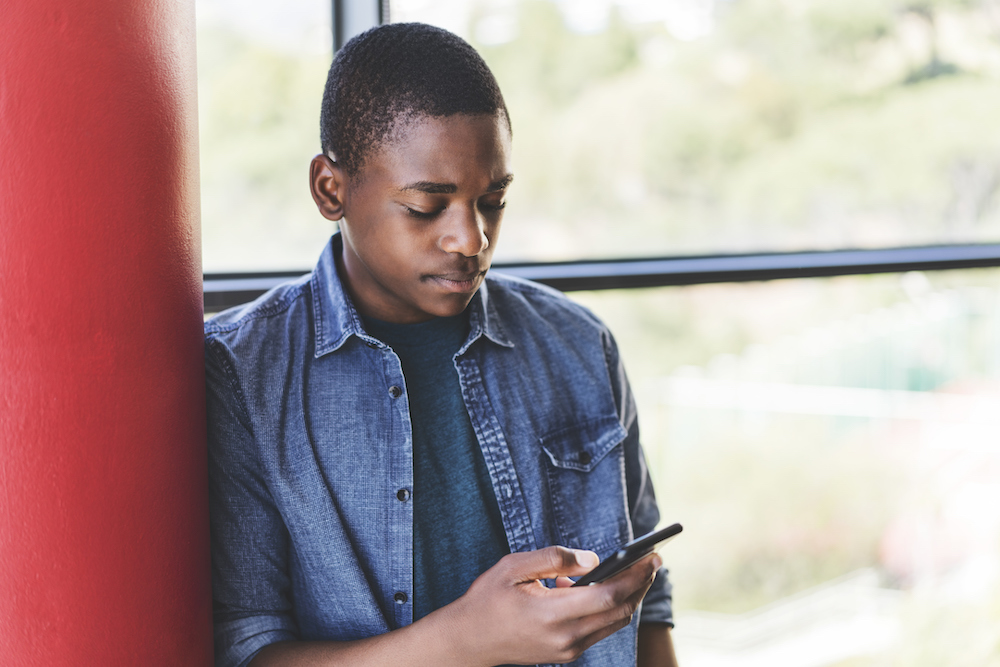Lesson Objective
Participants will be able to explain how their online activity and the content they share affects their online identity and reputation.
Participants will be able to explain how their online activity and the content they share affects their online identity and reputation.

Ready?
Begin Lesson
Media literacy skills help you to be a critical consumer and creator of information, both offline and online. However, confirmation bias and computer algorithms can facilitate echo chambers, isolating people from one another and making it more difficult to use media literacy skills to engage in critical thinking and meaningful discussion of online content.
In the Privacy Module, you can learn that a digital footprint is all of the information about an individual that exists online.
This can include personal information shared by someone in the form of:
A digital footprint even includes interactions with family, friends, groups and organizations through comments and likes, as well as, strictly speaking, all websites you visit. In addition to personal information and personal content, your digital footprint can be impacted by the content and media that you repost and share from others, and that others share about you. If you want to leave a positive digital footprint, think carefully about the credibility and reliability of the information that you share from others.
It is important to evaluate the information source, but also consider what message you are sending by reposting or sharing that content. People usually view such interaction as showing support for the content, unless you specify in your post that this is not the case.
THINK before you post. Some educators have utilized this strategy to teach school students about positive digital citizenship, but it works for people of all ages. Ask the following question: Is the information that I am going to post or share
True
Helpful
Inspiring
Necessary
Kind
In the last lesson, you learned about the difference between disinformation and misinformation. Even though there isn’t malicious intent with misinformation, there can still be consequences for sharing deceptive or false information.
Employers often look at job candidates' social media accounts, which can influence decision-making during the hiring process. If you currently have a job, your employer might also be influenced or take action based on your online activities.
Confirmation bias is the tendency we have to consume information in a way that supports our existing beliefs. Confirmation bias can influence how we find, interpret, share and recall information.
When credible information challenges our existing beliefs, it is more difficult to accept that information as true. Because of this, confirmation bias can influence the spread of disinformation and misinformation.
How do we combat confirmation bias?
An echo chamber is a setting in which an individual only interacts with content or information that reflects and reinforces their own opinions. Echo chambers are influenced in part by people’s tendency toward confirmation bias and can
be aided by algorithms that deliver content recommendations based on previous media consumption.
Echo chambers can distort someone’s perspective to the point that they are unable or find it difficult to consider different viewpoints and thoughtfully discuss complicated issues. They can also reinforce misinformation that supports one’s deeply held beliefs.
Echo chambers happen anywhere people exchange information. However, they are common online because it is easy to find like-minded people and perspectives with search engines and social media tools, which are designed to facilitate quick results based on user preferences.
How do you know if you are part of an echo chamber?
Avoid becoming part of an echo chamber by doing the following:

Congrats!
You've finished the lesson

Students will learn how to keep their online information more secure by using and maintaining strong passwords.
View Page
Students will learn to recognize unsecured Wi-Fi when it is available to them, understand the trade-offs inherent in using unsecured Wi-Fi, and make informed decisions about when to connect to and use unsecured Wi-Fi.
View Page
Students will learn about malicious online users who might attempt to use security weaknesses to gather information about them.
View Page
Students will learn what information verification is and why it is important for news consumers.
View Page
Students will learn about a five-step checklist they can use to verify the origin, source, date, location, and motivation of news.
View Page
Students will learn how to keep their online information more secure by using and maintaining strong passwords.
View Page
Students will learn to recognize unsecured Wi-Fi when it is available to them, understand the trade-offs inherent in using unsecured Wi-Fi, and make informed decisions about when to connect to and use unsecured Wi-Fi.
View Page
Students will learn about malicious online users who might attempt to use security weaknesses to gather information about them.
View Page
Students will learn what information verification is and why it is important for news consumers.
View Page
Students will learn about a five-step checklist they can use to verify the origin, source, date, location, and motivation of news.
View Page